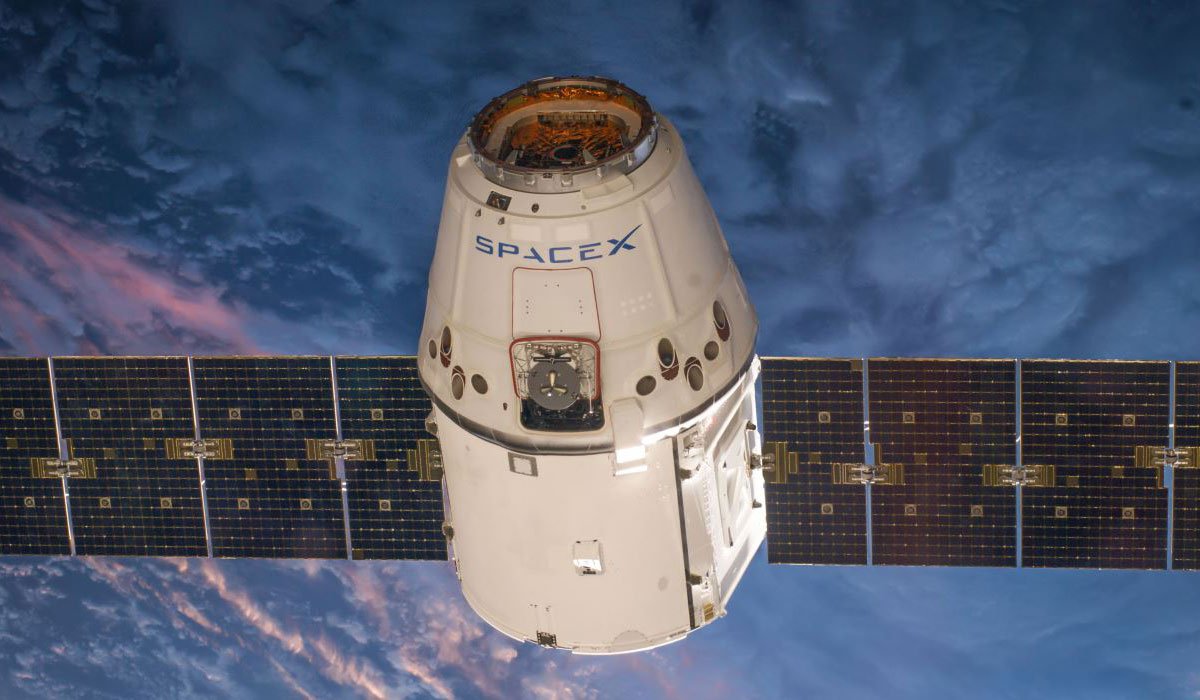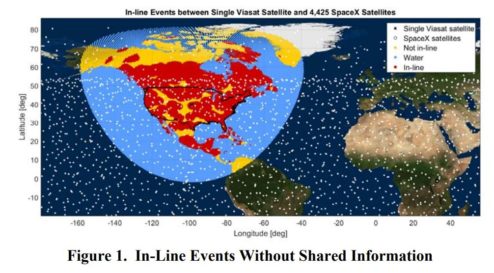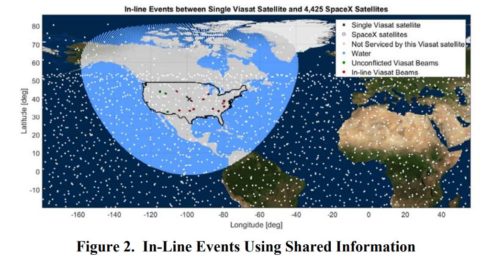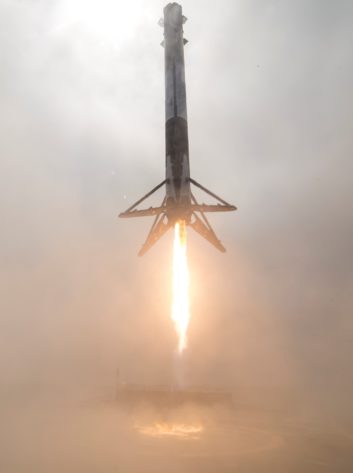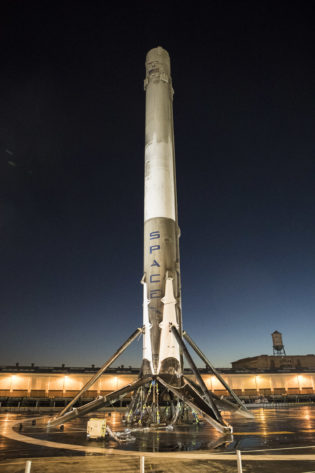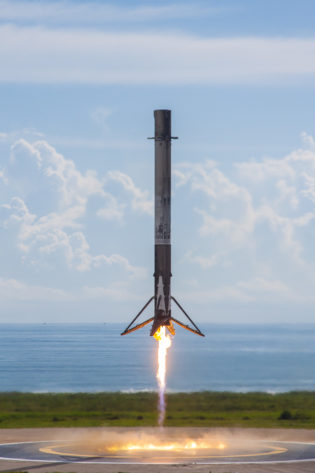Correction: Upon further analysis of FCC filings and proposed updates to ITU regulations, SpaceX’s Internet constellation is on much steadier ground than it initially appeared to be, and the FCC decision made on September 26 2017 to update its NGSO FSS regulations is likely to help SpaceX far more than it might harm the company.
The ITU has since 2015 taken a stance that aligns more with the FCC’s cooperative spectrum sharing policy and did not intend for Part 5 of its Radio Regulations to be interpreted as a “first come, first serve” attitude. Specifically, the ITU’s 2017 Rules of Procedure pointedly state in Article 9.6 (Word document download) that those rules were not intended “to state an order of priorities for rights to a particular orbital position” and that “the [interference] coordination process is a two way process”. An ex parte filed with the FCC (PDF download) by SpaceX on September 15 stated SpaceX’s support for these international and domestic policy adoptions, as well as the FCC International Bureau’s responsive consideration of SpaceX’s own suggestions.
The company’s first two test satellites could still launch later this year
The U.S. Federal Communications Commission (FCC) responded September 7th to requests for modification to existing satellite communications regulations and FCC practices from a number of prospective constellation operators, including OneWeb, Telesat, and SpaceX.
The FCC ultimately decided to avoid one major rule change that could force SpaceX to completely reconsider its strategic approach to its proposed Low Earth Orbit broadband constellation.
To grossly oversimplify, SpaceX had requested that the FCC apply their non-interference rules for lower orbit communications satellites to internet constellations operating both inside and outside the physical United States. These rules require that communication satellites operating in non-geostationary orbits (NGSO) share the available wireless spectrum equally among themselves when two or more satellites pass within a certain distance of each other relative to ground stations. In simpler terms, consider your smartphone’s cellular connectivity. The FCC’s rule for satellites in lower orbits can be thought of like multiple smartphones using the same cell tower to access the internet: the cell tower simply acknowledges the multiple devices it needs to serve and allows each device a certain amount of bandwidth.
However, the FCC is admittedly a domestic Commission focused on administering communications rules and regulations in the United States, and an agency already exists for coordinating global communications needs, called the International Telecommunication Union (ITU). The ITU’s Radio Regulations are considerably more simplistic. Rather than the FCC’s more nuanced and reasonable methods of spectrum sharing, the ITU allows the first satellite operator actively using a certain orbit or spectrum to become the primary coordinator for all interference issues. Put more simply, it gives those who launch communications satellites first a “first come, first serve” advantage that lets those entities then set the rules for interference with their constellation.
Both OneWeb and Telesat, companies also interested in launching global broadband constellations, are licensed in countries other than the United States, meaning that the FCC has given the ITU precedent in deciding how to deal with SpaceX’s potential constellation interference. SpaceX’s proposed constellation of at least several thousand satellites ends up being at a distinct disadvantage simply because it would take far longer for SpaceX to even partially complete its constellation when compared with competitors like OneWeb, who expect to finish launching the first phase of their constellation several hundred satellites by the end of 2020. Under the ITU’s regulations, SpaceX could be forced by competitors to effectively step on eggshells around their constellations by avoiding interference to the furthest extent possible, rather than simply sharing spectrum in the brief periods where different satellites temporarily interfere with each other.
While the FCC’s choice to cede international interference coordination to the ITU is a huge blow to SpaceX’s proposed internet constellation efforts, the same September 7th report also eased a handful of other requirements that would have proven difficult for SpaceX’s massive constellation. For geostationary constellations, the FCC previously required that all satellites be launched within a period of six years, with failure to do so resulting in a revoked license for the company in question. In a small concession to SES, O3b, and SpaceX, the FCC now plans to require that 50% of lower orbit satellite constellations be launched within six years of receiving an FCC license. This would still be a massive challenge for SpaceX’s plan of 4,425 initial satellites and a follow-up constellation of more than 7,000 additional satellites (PDF download).
The FCC’s September 7th report will not become final unless it is passed by vote in a September 26th Open Commission Meeting. It is possible that SpaceX council will make a statement protesting the FCC’s decision, but it is nevertheless likely that the FCC’s report will be accepted and become official. While the LEO internet constellation has remained a low priority for SpaceX since it was revealed in 2015, the company has steadily continued work on the project and SpaceX has every reason to continue pursuing it given the potential profit margins it could produce. In spite of the now expanded difficulties lying ahead, SpaceX appears to be preparing for the first launch of two test satellites related to its internet constellation efforts. The move is seen as a likely attempt to tag along as passengers during SpaceX’s launch of PAZ, a Spanish earth imaging satellite, during the final three months of 2017.
Elon Musk is scheduled to reveal more details on SpaceX’s Mars exploration and colonization efforts on September 29th. He has stated that this presentation will focus more on the “how” of colonizing Mars, revealing how exactly SpaceX thinks it can fund the development of its Interplanetary Transport System. Musk also confirmed several weeks ago that SpaceX had reduced the size of the ITS rocket to a still-massive diameter of 9 meters, and sources inside the company have also indicated that the company is thinking about modifying its LC-39A Florida launch pad to support both Falcon and ITS vehicles. SpaceX recruiters revealed earlier this week that SpaceX also intends to have their Boca Chica, Texas launch pad, which is currently under construction, be capable of eventually launching ITS-sized vehicles once it comes online in 2019 or later.

